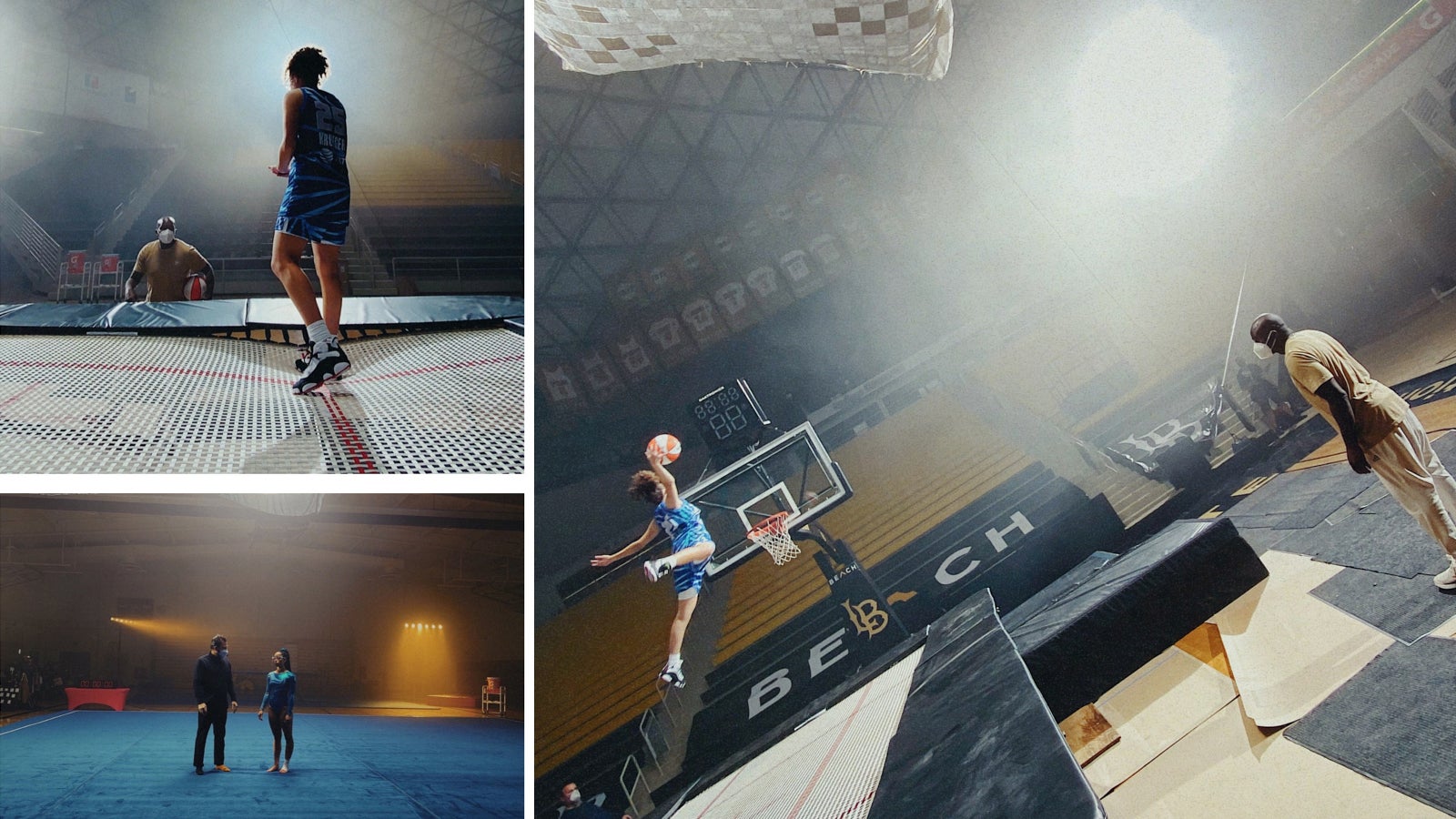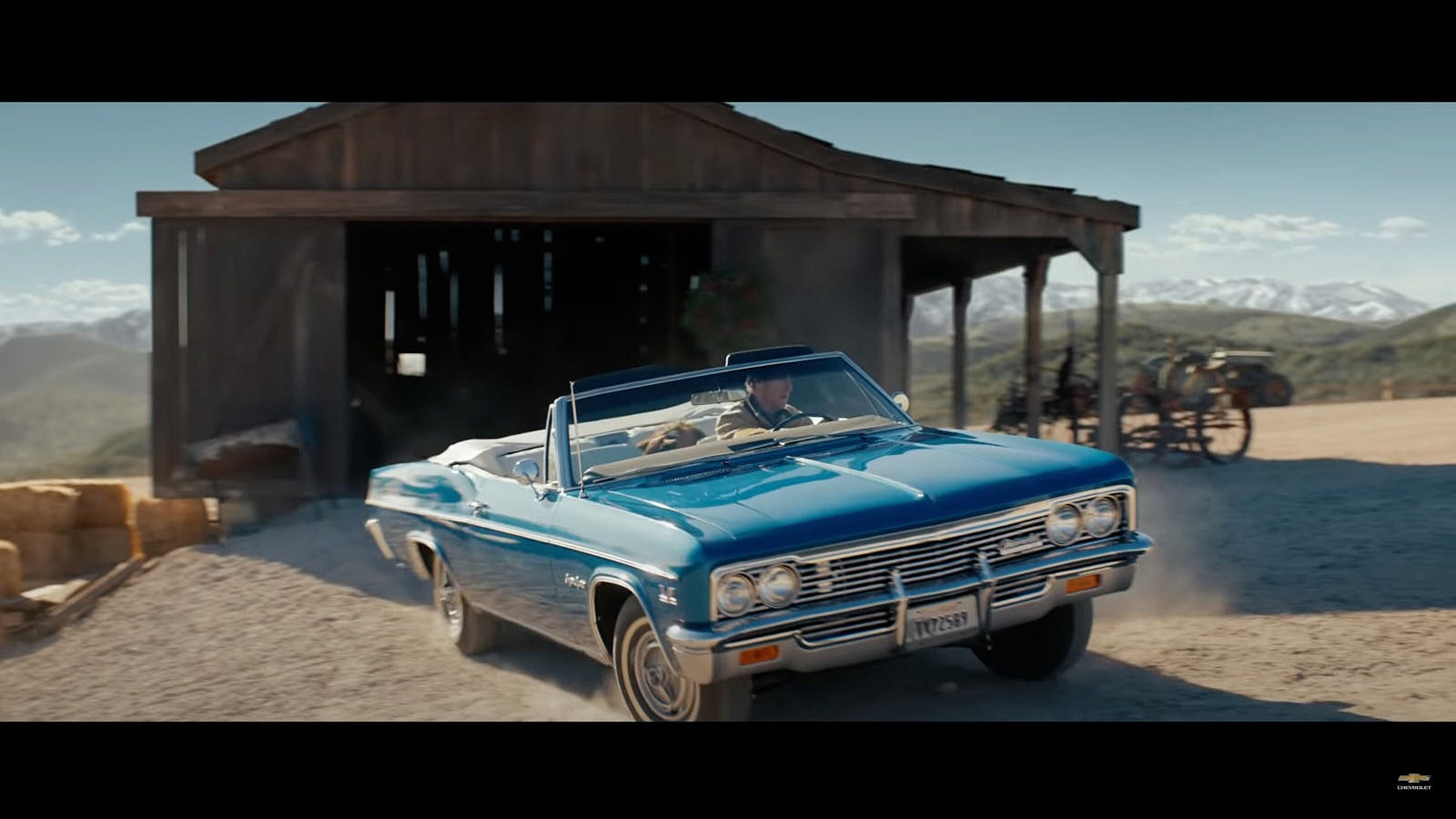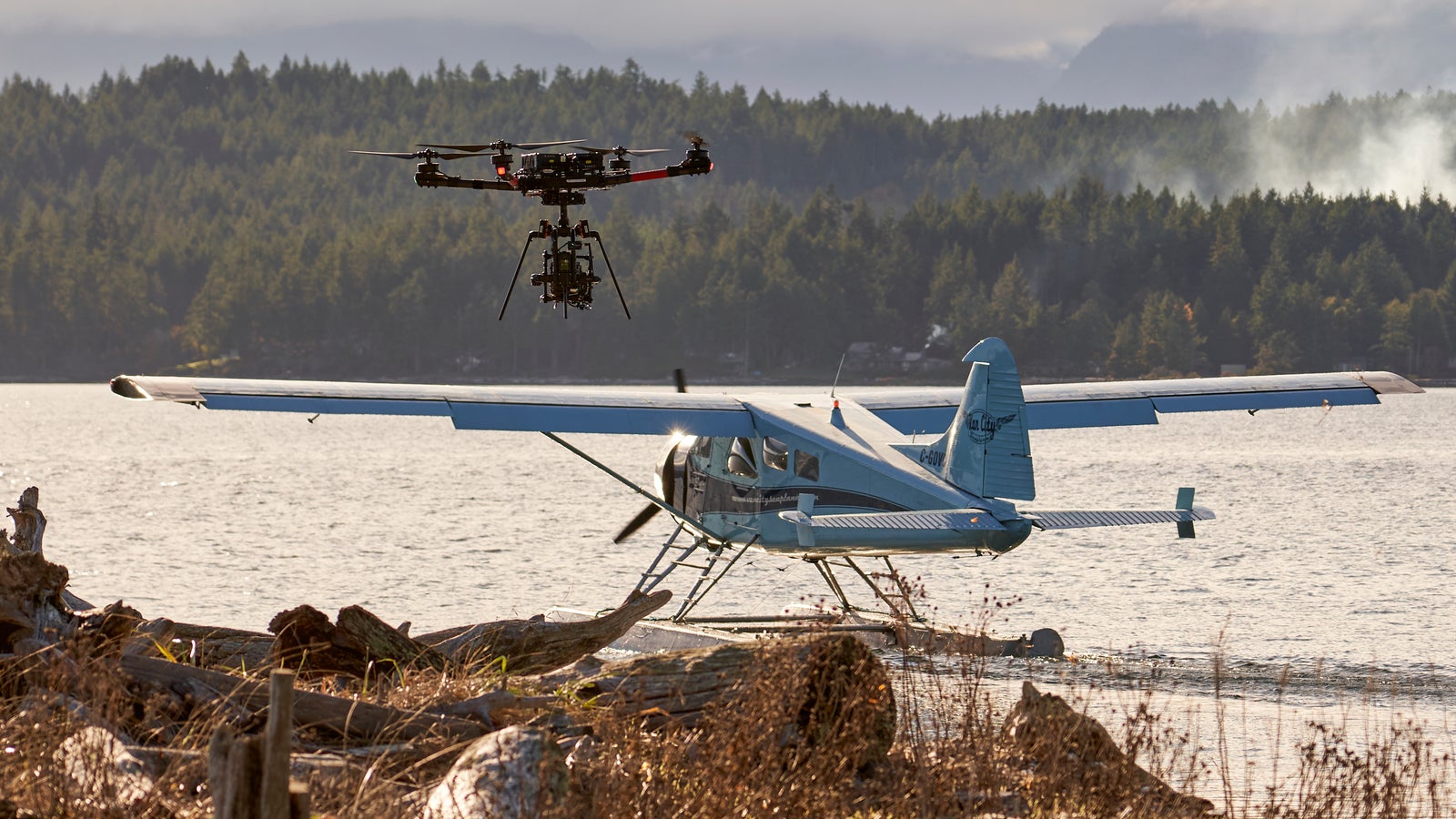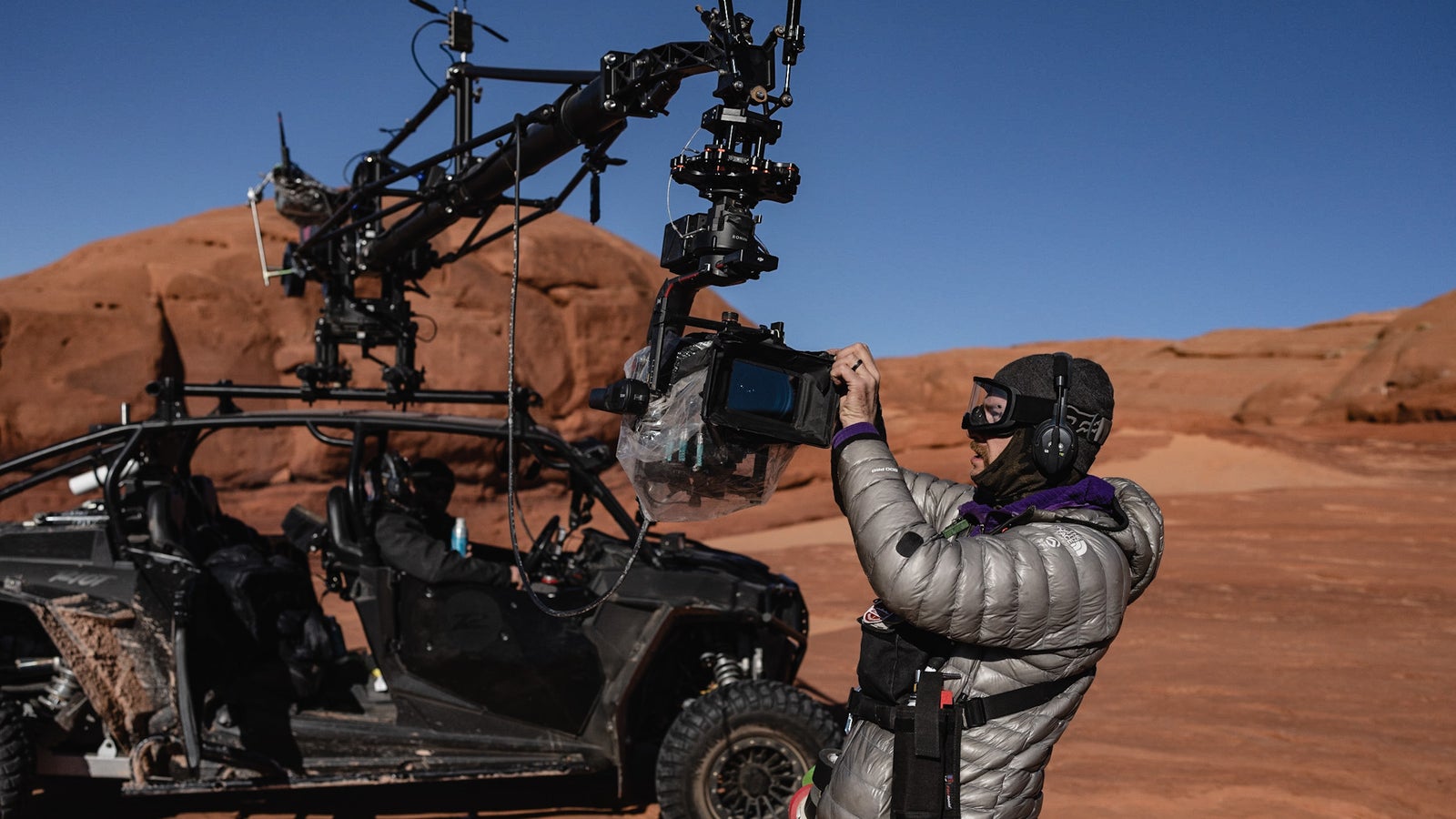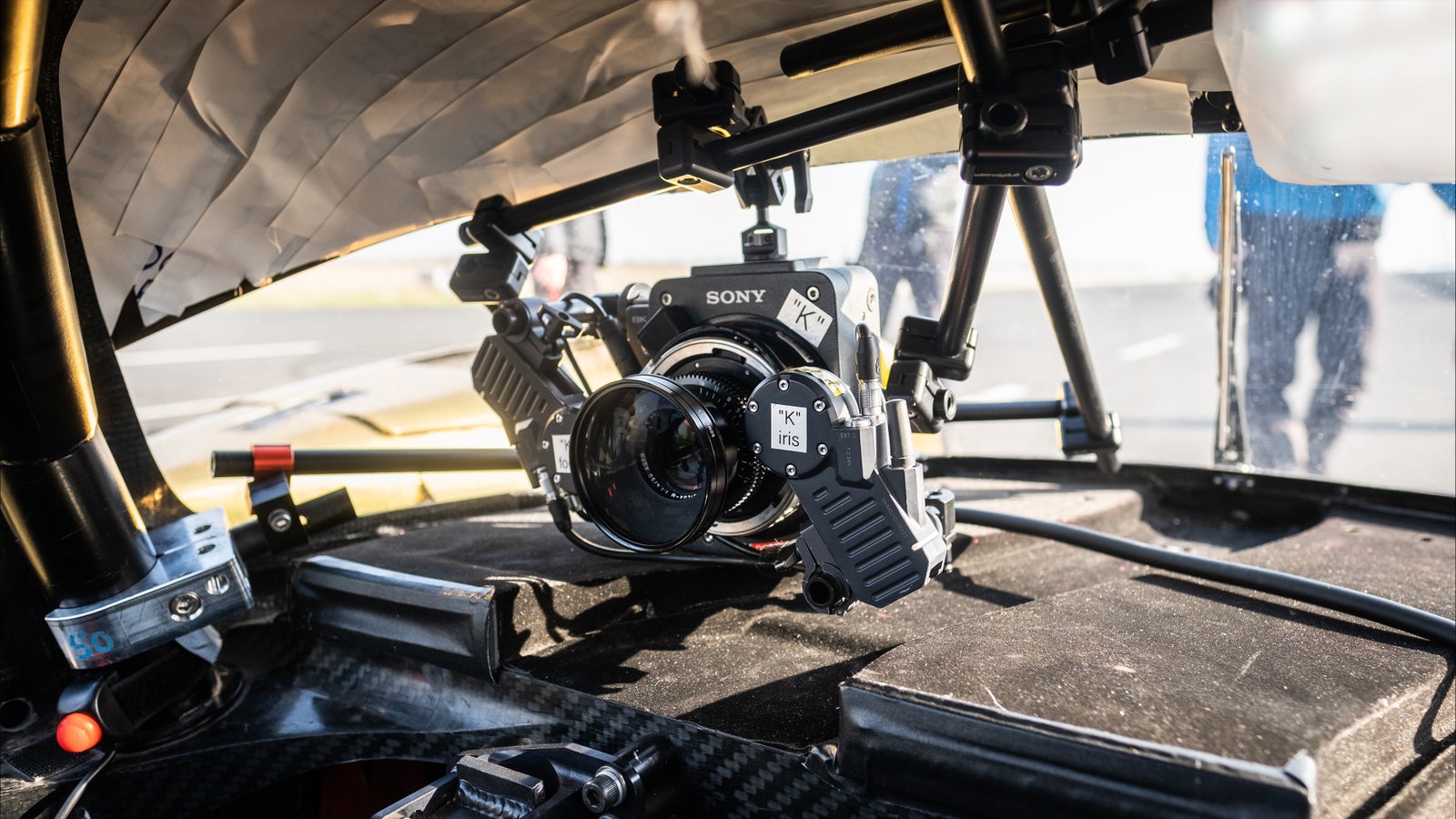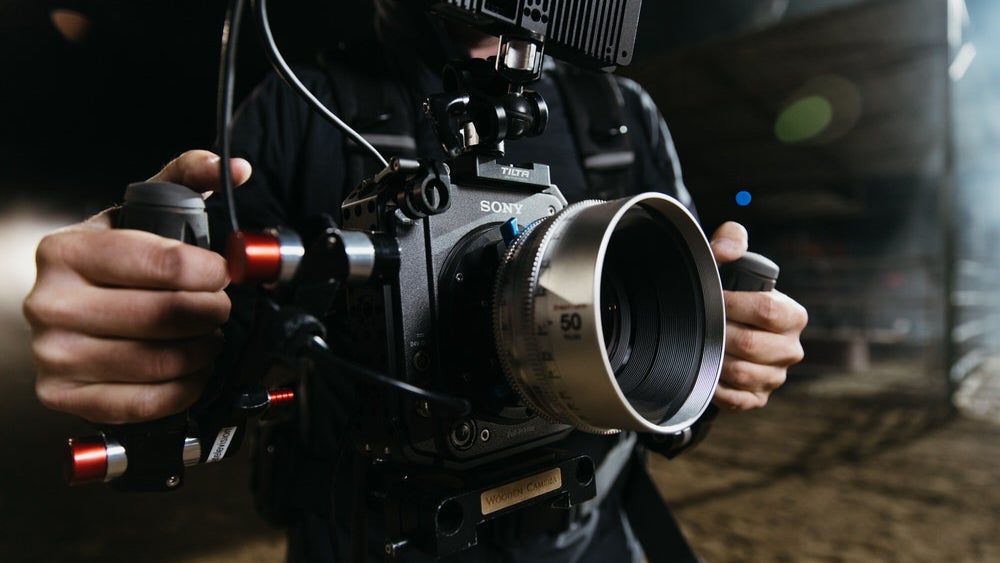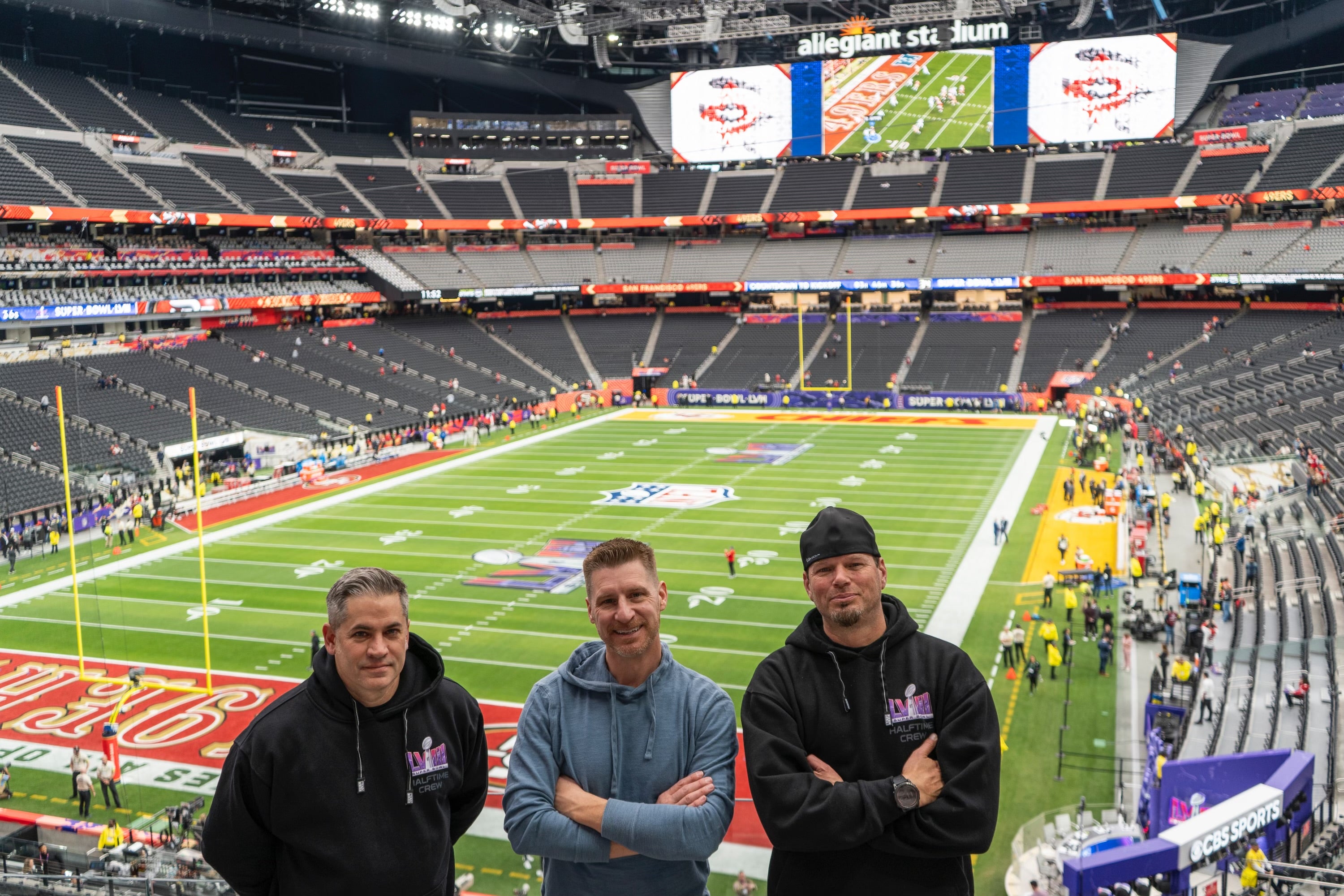
02-15-2024 - News
Shot on VENICE 2: From Usher, Lasers, and Vegas: Go behind the scenes of one of the biggest games on earth
By: Oakley Anderson-Moore
More people are watching the big game now than have ever watched before in the fateful Sunday’s 50+ year history. Why?
There’s a decidedly cinematic shake-up afoot in live television, and you could argue that it all stems from the Halftime Show.
For the fourth year in a row, Funicular Goats and Aaron Cooke have partnered with Director Hamish Hamilton and RocNation to bring a cinematic look to this year’s Halftime Show. It’s their third year in a row shooting on the Sony VENICE and VENICE 2. Last year, director Hamish Hamilton, along with co-director Jay-Z, won an Emmy for the amazing experience of the Rihanna Halftime Show. Hamilton and Jay-Z helmed the team again this year for the spectacular Usher performance at halftime.
Sony Cine sat down with Aaron Cooke and Funicular Goats’ James Coker to talk about creating this year’s Halftime show, and why it’s more cinematic than ever.
Creating the colorful “Greatest Showman” theme for Usher’s Las Vegas Halftime Performance
This year’s incredibly cinematic Halftime show was a colorful tribute to live entertainment – from acrobats to stilt walkers and roller skaters!
“The vibe of this year's show to me is ‘The Greatest Showman,’” says Aaron Cooke. “We're in Vegas, which is really the heart of artists performing and live shows. And you have Usher, who has this broad career and crosses genres of music. He's very much a showman. You can see that in our show in the colors, this bright Vegas neon look, and lasers. And it's really a beautiful show.”
To pull off a Halftime Show as cinematic as this year’s, there are meetings for months leading up to Sunday’s big game. However, some things can only be seen once the team is in the stadium in the rehearsals a few days out.
“Everybody works in these vacuums, and they bring their ingredients and we put it all together and it's organized,” describes Cooke. “However, you can't really experience it all together until you experience it all together. This process is very unique and unlike any other. It’s a lot of very talented, highly skilled people doing the best work they can do.”
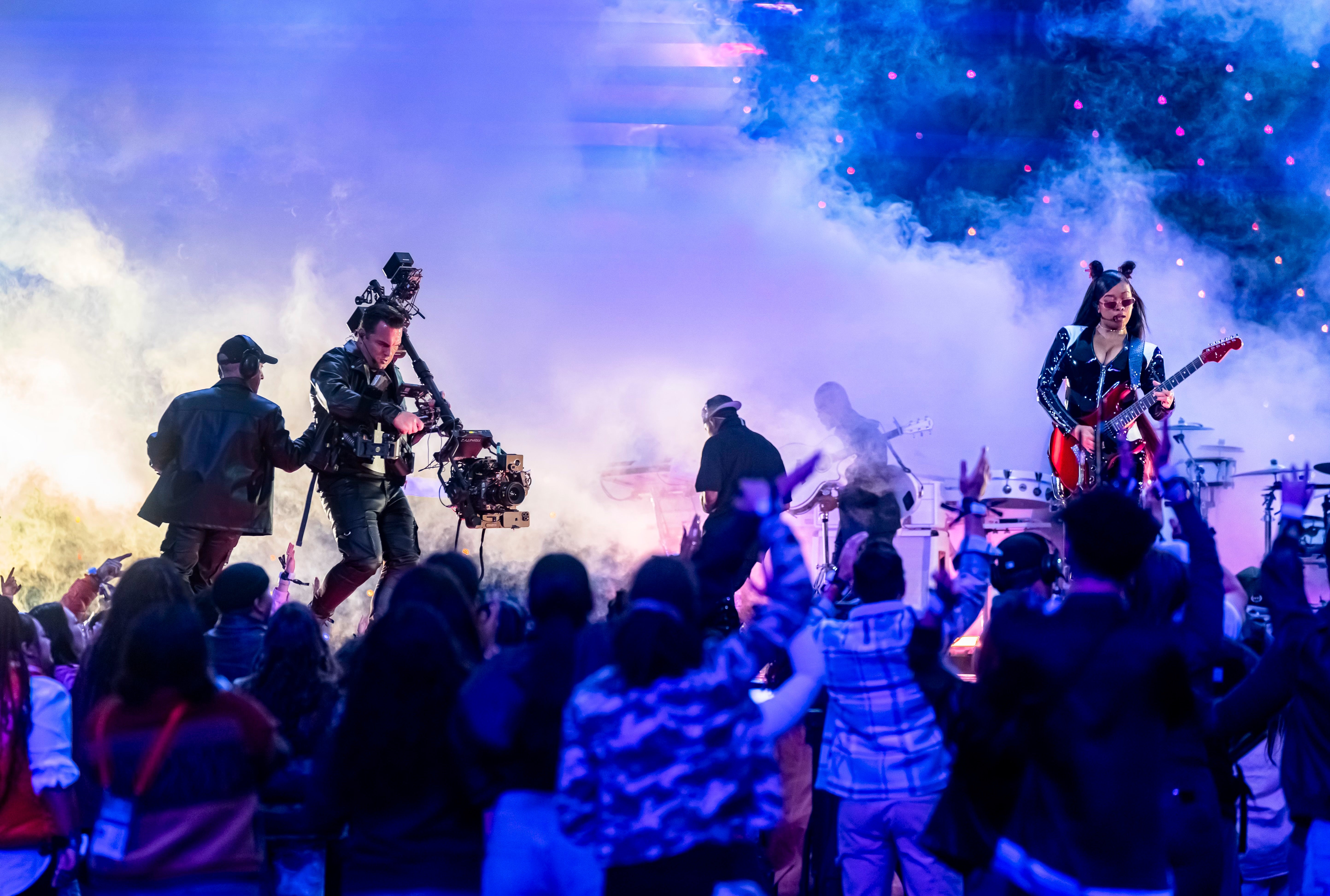
Using nine Sony VENICE 2 and three Sony VENICE cameras to capture the most watched halftime in sports
To create the cinematic halftime show this year, the team needed the Sony VENICE. Why?
“We originally incorporated the VENICE because of the ease of the way it integrates into a multi-camera environment,” says James Coker, who is the show’s Technical Manager. “If I was using other brand cameras, there are challenges to get these cameras talking back to a truck for the control stations. With the Sony VENICE, once they're plugged in, within two seconds, we have full control in the truck. We get a very limited time on the field from the time we push out, about eight minutes. I cut that time in half and say we have four minutes. Our DIT team, our director, and all these key players, need to see these cameras to give them the confidence before we go live.”
To keep pushing the cinematic look of the Halftime show, this year the team also paired many of the Sony VENICE 2 cameras with cinema glass, including the ZEISS Supreme Prime Radiance lenses.
“We've been experimenting more with the primes,” says Cooke. “We have pitched it and shown that we can use it, and right now everybody's really liking it.”
While the team has been using the Sony VENICE 2 for the last few years, they also opted to include some original Sony VENICE models to suit the unusual special effects of the show.
“It really became a science experiment because the artist’s creative team wanted to do laser banding,” explains Aaron Cooke. “When you're projecting lasers, the light frequency has an effect with the camera frequency. So when we adjust the shutter on the VENICE or any cinema camera, you see the laser differently than what you see with the human eye. It creates a really cool banding effect.”
They brought the Special Effects Team to their studio and did a series of tests with the lasers.
“The VENICE 2 sensor is a lot more sensitive and has a higher refresh rate, I think, than the Venice,” says Cooke. “When we tested them side by side, we were visually seeing on-screen the results we wanted to attain using the VENICE 1.”

How this year was a big challenge due to Allegiant Stadium’s field tray
There are lots of challenges to filming on a grass field. This year’s game brought another level to that challenge: the field tray. The Allegiant Stadium in Las Vegas uses a four foot deep and 9,500 tons tray that moves in and outside the stadium via an elaborate rail system.
“Every day the field's going in and out for our rehearsals,” describes James Coker. “The challenges of that are astronomical because we have to wait for the field to go in. It takes three hours to get it in, and then we can only go in on the grass for a limited amount of time, two hours each night. They've got to protect the field for the game. The grass is the most important thing for the players to play on.”
Not only is there limited time on the grass in the field tray, but a strict weight limit. This becomes especially problematic for large equipment that would normally come in with motorized bases. If the base puts them over the weight limit, the team has to switch and have gear manually pushed in.
“The Chapmans, the AGITOs which are like RC cars with telescoping masts that go up and down, they are motorized and self-driving,” says Coker about the gear which gets priority on the weight docket. “We used two this year, and that's such a great tool to have in addition to the standard jib, Steady Cam, Trinity and handheld. Those are our main cameras on the field.”

Why the pandemic inadvertently expedited the cinematic shift of live television
The industry did their best to rise to the changing needs of production during COVID-19, and according to the team, this coincided with creative and technological shifts that made it possible to shoot live events more like a traditional film than broadcast.
“Originally, it was only broadcast cameras that were used to cover the show,” says Cooke about the Super Bowl. “It was the way that live shows have been done forever. Then directors over the years like Hamish started getting their own tools and their own cameras on the field, and incorporating them into the broadcast workflow.”
COVID brought the need to take that experimentation even further.
“The first year we did the show, everything was different,” says Cooke. “We had to do a show on the concourse and build a set, and there were not very many people in the stadium. It was a radically different Super Bowl halftime show than ever had been done. Building the set up on the concourse necessitated that we had our own cameras. That alone was the fundamental difference.”
“That was the year that we transitioned to majority of our own cameras and a cinematic look,” confirms James Coker.
Since that first Half Time Show with The Weeknd, they have continued innovating. It earned Hamish Hamilton & Jay-Z the Emmy for last year’s incredible Rihanna performance, and this year’s Usher performance just topped the list as the most watched Half Time Show of all time.
“Hamish was into it and had faith that we could pull it off,” says Cooke about that first time they brought a cinema camera onto the field. “That was the transition year, and once we opened that Pandora's box, that playground, there was no going back. We're still riding that wave, and that benefit of everybody embracing the workflow that we're doing.”
